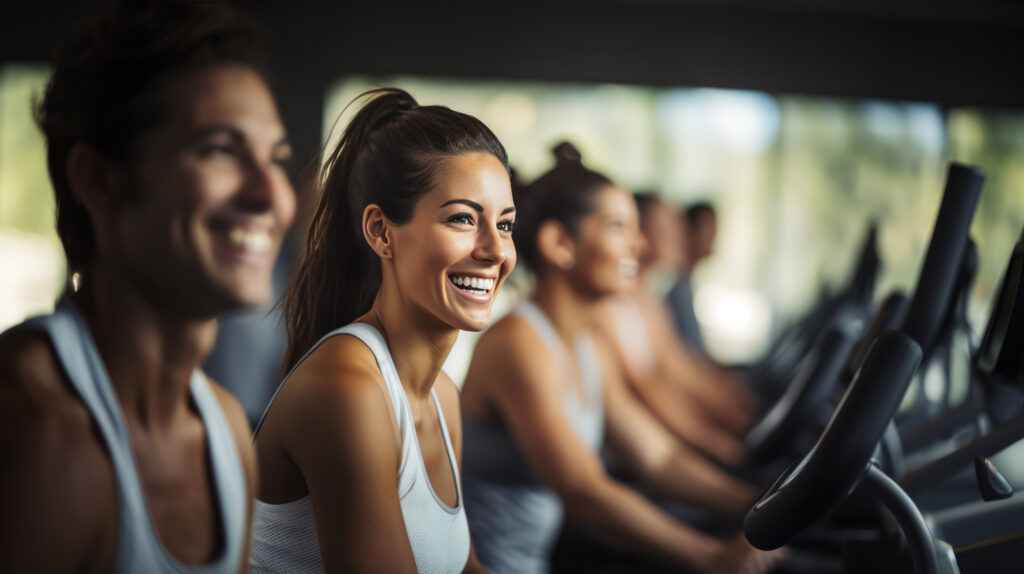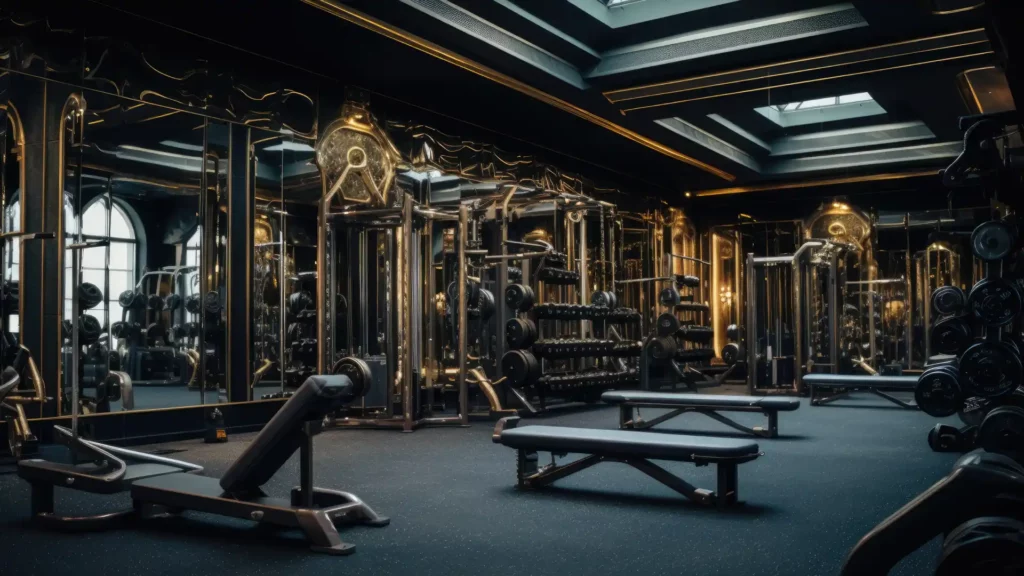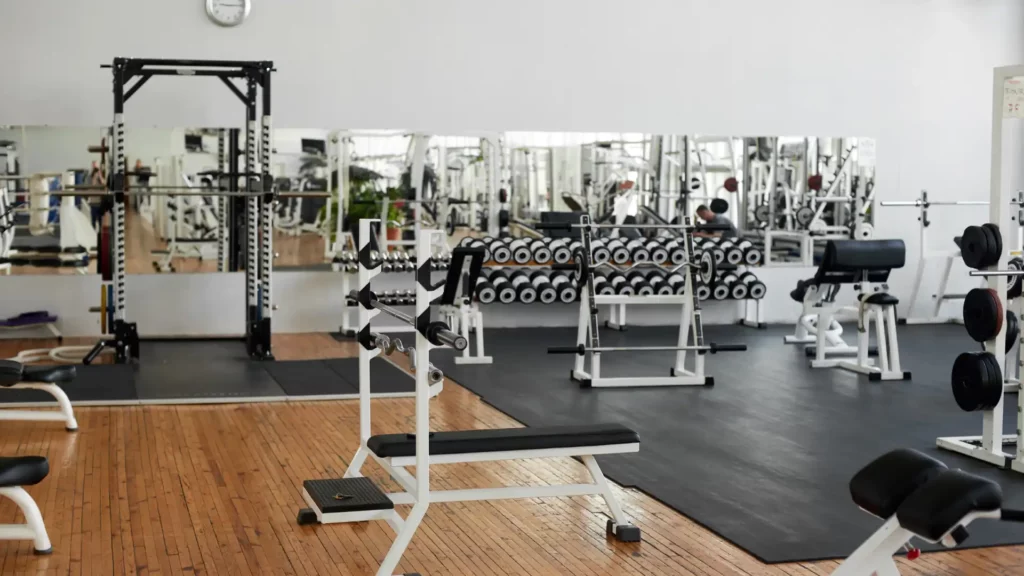
Building a Strong Community: Strategies to Engage Gym Members
To be a successful gym business, your clients or members must remain loyal and attend. Attracting ongoing business—although also important—is not enough. You have to
From your home.
Talk to an expert
Chat to an expert
On orders over £500
For selected products
Squat racks and power racks give trainers the best of strength training, with several different exercises available for this piece of equipment.
They’re metal frames with moveable bars designed to hold Olympic barbells at your chosen height, keeping you safe if you’re not with a spotter.
Both squat racks and power racks work in the same way with a couple of differences. The main difference between the two is the fact that power racks offer maximum safety, are much more versatile and offer customisation for weight storage, powerbands, landmine core trainers and more.
These racks are both popular tools in commercial and home gyms because of their versatility and function. If you’re thinking of getting one for your gym, here’s a guide to setting them up, how to use them, and how they can help you.
• A squat rack, a half-rack, or a full-power rack
We sell a range of different types of racks and power racks at Gym Gear, below are a few examples:
The Pro Series Squat Rack is sturdy and stable and is the perfect solution for any home gym or light commercial fitness facility.
The Sterling Series Half Power Rack is robust and safe, with a walk through design and an integrated chin-up bar.
The Sterling Series Full Power Rack has an integrated chin-up bar and gives you the utmost safety for the compound exercises that you’d otherwise need a spotter for.
The Sterling Series Elite Power Rack has an integrated chin-up bar and is durable and heavy-duty, perfect for commercial gyms.
• Olympic plates
Click here to see our full range of Olympic plates.
• Olympic bars
Click here to see our full range of Olympic bars.
Setting up a squat rack or power rack should be simple, but there are some really important steps to follow:
• Do some checks
Before you use your squat rack or power rack, you need to make sure it can handle the weights plates you’re using. These types of racks are supposed to keep you safe if there’s an accident, so it should be able to take much more weight than you’re lifting. Load the barbell and let it fall on the spotters from around 10 inches and see how it reacts.
• J-Hooks
Squat racks usually have multiple fixed J-Hooks, whereas J-Hooks on a power rack can be adjusted and set to your height. Most people aim to set them just below their shoulder level. You need to set them so that you get the loaded bar off the J-hooks with ease, but not so high that you have to go on your tiptoes.
• Safety pins/bar catches
Adjust the safety pins/bar catches to your lowest squat level so that the bar won’t touch them when you squat, but make sure that they are high enough to be effective if you fall.
One of the reasons that these racks are so popular in the fitness world is that you can do a range of different exercises with them. Below we’re going to take you through 5: squats, barbell lunges, deadlifts, standing overhead presses, and barbell bent-over rows.
The most common activity to do on a squat rack is… you guessed, it… squats! To squat safely, stand under the bar with your feet shoulder-width apart, ensuring the bar rests on your upper back/traps. Place your hands behind the bar with a narrow grip, hold it at an even distance on both sides and lift it off the J-Hooks. Keeping your chest up, squat down pushing your knees slightly to the side while moving your hips back. When squatting you should break parallel by squatting down until your hips are lower than your knees. Push yourself back up to the starting position with your knees and hips locked at the top.
A step up from the squat, a barbell lunge is where you hold the barbell on your upper back/traps and keep your back straight. Take a large step forward with one leg, landing on your heel, and then your forefoot. Lower your body by flexing your knee and hip of the leg in front, until your knee on the behind leg almost reaches the floor. Then return to your original standing position and alternate legs.
Deadlifts are where you lift the bar from the ground to your hip level and then back down again. When performed properly, deadlifts will challenge every muscle in your body.
To perform a deadlift, you should stand shoulder-width apart with your toes just under the bar. Bend down and take hold of the bar. There are two ways you can grip the bar, one being a double overhand grip and the other being a mixed grip. When you have a comfortable grip, bend your knees until your shins touch the bar. Keeping your back straight and your chest up, stand up lifting the bar and weight, to your hip level and then back down again.
A Standing Overhead Press is usually performed whilst standing, by pressing a bar upwards above your head. To carry out a standing overhead press correctly you should hold the barbell at your collarbone height, with your hands next to your shoulders. Press the bar upwards over your head, locking your elbows at the top. Bring the bar back down to your collarbone height; that is one overhead press complete.
For a back workout, bent over rows are a fantastic exercise. Stand with your toes just underneath the bar, bend forward at the waist and grab the bar with a double overhand grip. Keeping your hips high lift your chest and straighten your back. Pull the bar up towards your chest then lower it back to the starting position and repeat.
There are lots of perks of having and using squat racks and power racks at your gym. We’re going to run through a handful of them below.
• They’re not as expensive as they look. At Gym Gear, we offer excellent prices for our top-quality products,
• Power racks often come with attached chin-up bars, like our Sterling Series range.
• These types of racks are there for your safety so that you can lift heavier weights when you don’t have a spotter next to you.
• You can step out of squat racks and half racks to do other exercises, such as deadlifts.
• Full power racks provide extra safety for heavy weight training and, if you fall or lose balance, the rack will always catch the bar.
• As well as giving you extra security, these racks don’t restrict the barbell.
• Half-racks and full-power racks are popular in home gyms because they offer many more performance options than squat racks can, such as seated chest presses, incline and decline presses and, because the spotter arm and J-Hooks can go low enough, chest presses.
We hope this article has given you some pointers on getting a squat rack or a power rack for your commercial or home gym. Our team is on-hand to answer your questions. For more information, contact us.

To be a successful gym business, your clients or members must remain loyal and attend. Attracting ongoing business—although also important—is not enough. You have to

What do you expect when you walk into a gym? A clean, welcoming environment with enough equipment to provide you with the exercise you want

You have invested time and money in your gym and its equipment. To keep your gym successfully operating, you need to look after it. It’s
PDF version available for download
Contact us for more information
We guarantee to match any other retailer

82 Roman Way Industrial Estate, Preston, PR2 5BE
sales@gymgear.co.uk
Registration Number: 3349377
VAT Number: 628894877